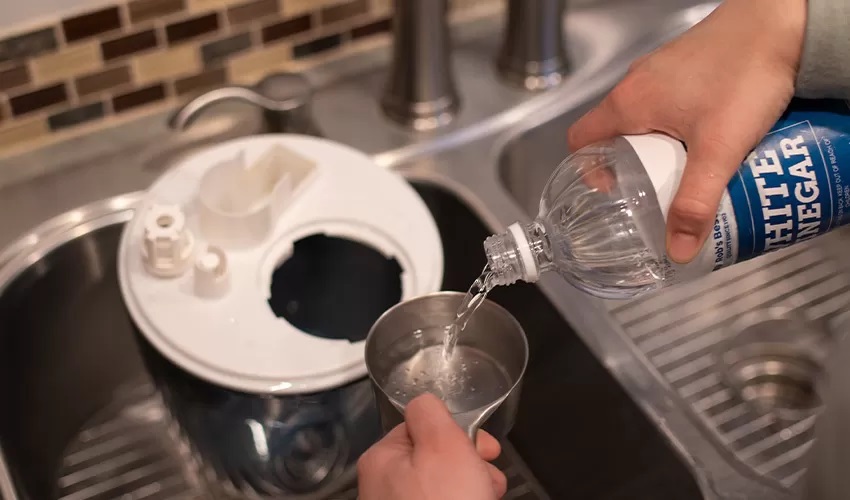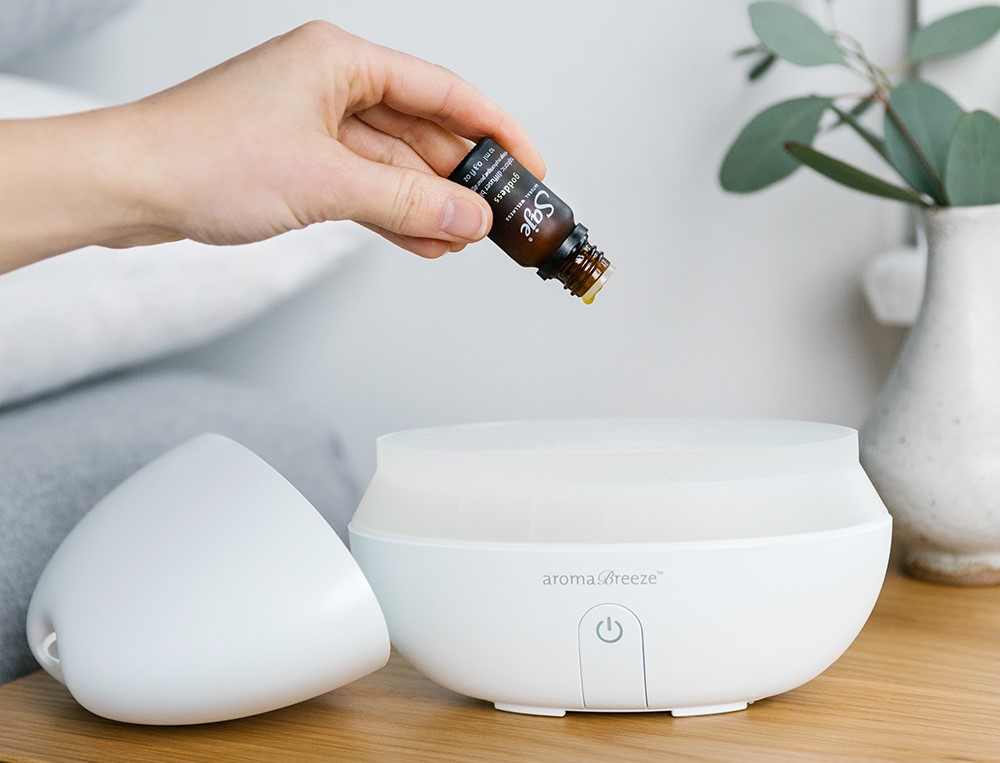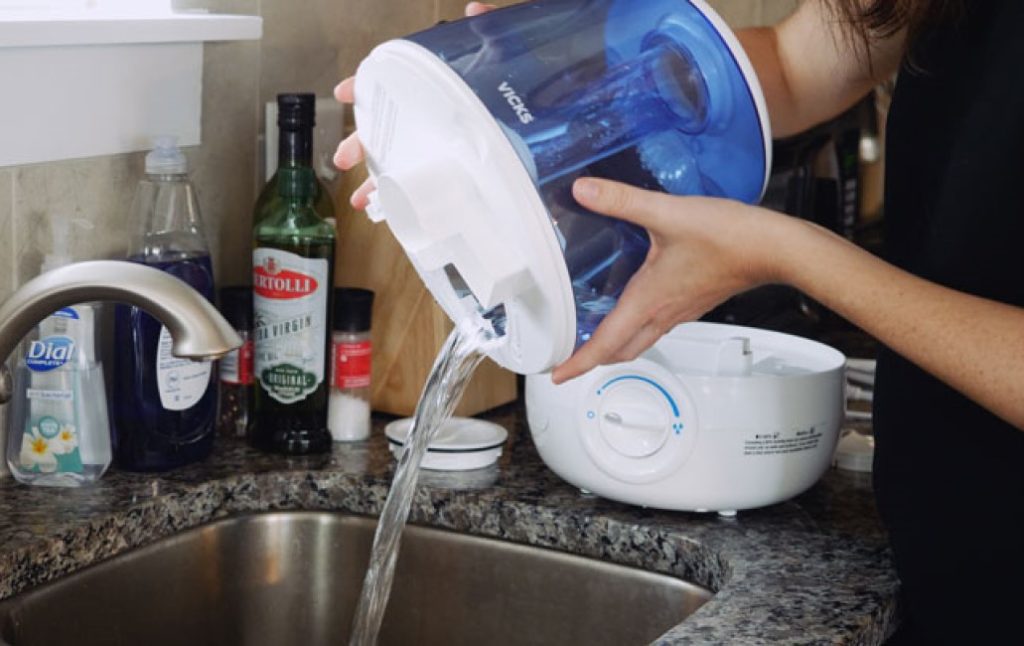

The ideal air humidity rate for health is between 30 to 50 percent Trusted Source Humidifiers: Ease skin, breathing symptoms - Mayo Clinic Humidifiers can ease problems caused by dry air. But they need regular maintenance. Here are tips to ensure your humidifier doesn’t become a health hazard. www.mayoclinic.org , according to Mayo Clinic. When the humidity is less than 20 percent, it can cause eye irritation, nosebleeds, dry skin, and allergic attacks, especially in people suffering from asthma or bronchitis.
To overcome this problem, you can of course use an air humidifier that will diffuse water vapor into the room. But if you don’t have one, we will show you how to increase humidity in a room effectively with homemade solutions and 100% natural methods, without using any device!
There are different ways to increase the humidity of the air in the house when the environment is very dry. You can place a bucket with water in the room, have plants inside the house, take a bath with the door open, among many other possible solutions.
Before seeing how to measure humidity levels and the ways to increase humidity in the room, it’s essential to know what our goal is in terms of the level of humidity we want to achieve. The requirement is the same for summer and winter times. However, there is a slight difference due to the obvious changes in atmospheric conditions.
During the months of summer, the average humidity level should not get out of the 30 to 45 percent range. This is lower than the 50% maximum recommended humidity level but you’d need relative humidity lower than 40 percent.
Similarly, in the winter months, 30 to 40 percent of humidity level is recommended for healthy and less-damaging air condition for humans, furniture, and equipment indoor.
The most efficient way to measure humidity is by using a hygrometer, which is the device that calculates the percentage of water vapor in the air, either outdoors or indoors. There are mainly two types:
If you are going to use a hygrometer to measure the humidity in your home, you must take into account the following:
Find a specific place. Humidity depends on temperature, so you should find an area of your house that is not affected by it. So avoid putting it near heat sources and especially in places where air conditioning devices are in operation.
Close the windows and doors and move the hygrometer away from them. You need to avoid temperature fluctuations.
Let it work for a few hours and don’t stick with the initial reading. Take three readings at different times and then take an average of the results obtained. It will be the most efficient way to have a truly representative value.
Hygrometers require calibration. You can take it to a specialized store after a while or you can do it yourself. Put it outdoors and see if the value obtained coincides with the one given by the weather for that moment and adjust it.
From homemade to natural, mechanized, and electronic options, there are many ways to humidify a room:
Would you like to know how to create humidity effectively? That’s by getting a humidifier. When you live in a region where the climate is very dry most of the year, it may be an option to purchase an electronic air humidifier. Of course, there are different types. Some of these include:
This is pure common sense. To prevent a situation where you have too dry air in your home in winter, it is important to adjust your thermostat properly. Ensure that the interior temperature does not exceed 21°C.
Technically, the more you increase the heating, the more the humidity level in your room will drop. So instead of setting the temperature to 25°C and staying at home in a t-shirt, turn the thermostat to 21°C and put on a sweater!
To humidify the ambient air in a small room (bedroom, living room, office, etc.) naturally, you can also place a bowl of hot water on a piece of furniture. The hot water will produce and send moisture in the form of steam around the room, increasing humidity. This trick is effective because it is faster than with the cold water container. However, once the water is no longer hot, it will evaporate much slower!
To humidify the air by evaporation in your home, another technique is to install a large container of water (a large saucepan or even better, a pot) in the room. It will evaporate under the effect of the heat and generate humidity. For aesthetic reasons, consider placing the container under a piece of furniture so as not to look unsightly and attract attention!
Do not forget to change the water regularly and to clean the container: the stagnant water can create a proliferation of microorganisms, which is not really the desired effect.
Alternatively, for naturalists and fans of the aesthetic, you can purchase an indoor water fountain and place it strategically in the room.
A good tip for increasing the humidity level naturally in your home is to let humid air circulate in all the rooms of your home. The place that can provide the most humidity in a house is the bathroom. Here, hot water flows, generating a lot of water vapor and humidity.
If the air in your home is too dry in winter, do not hesitate to open the door to your bathroom once you are done showering. This way, the humid air can spread throughout your home. The most humid part of the house is the bathroom. And when the humidity level reads more than 50 percent, there will be condensation, growth of mildew, mold, and the peeling of paints. Leaving the bathroom door open after baths will therefore bring two solutions: room humidification and bathroom dehumidification.
You may not know it, but to naturally humidify the air in your home, another great and ecological option is with the so-called depolluting indoor plants. You can get these at your florist, garden center, or nurseryman.
Once watered, the leaves of these plants will emit water vapor, but, admittedly, in smaller quantities than a humidifier sold on the market. However, the water vapor created will still humidify the ambient air. They will also decorate your room with pretty plants, and fight against pollutants that are lurking everywhere in your home.
Among the effective depolluting plants are: anthurium, areca, azalea, ficus elastica, chlorophytum, dragon tree, saber-leaved fig, Boston fern, gerbera, ivy, saw palmetto, the philodendron, and many more.
Here’s another grandmother’s tip if you want to humidify the air in your living room without having to invest in a radiator or humidifier. However, if you have a tumble dryer or don’t want to dry all your clothes in the middle of your living room, place some damp towels and tea towels in the room. Wet them, wring them out, and then hang them up next to your radiators.
To release water vapor that is too dry in a room, you can also use System D. Heat an instant pot filled with water and set to saute. Turn it on warm and that’s it. Ensure you keep checking it, adding water when needed. It’s a somewhat radical technique, but it works.
Keeping the air moist is important to improve breathing, even if you do not have breathing problems. However, there are some situations in which humidifying the air is recommended, these are when you have frequent allergic attacks, asthma attacks, nasal congestion, dry throat, or cough frequently.
In addition to this, people who constantly suffer from rhinitis can also humidify the air, to try to solve the problem and keep the airways moist and less irritated.
So that the air in a room is not too dry, it must have a humidity level between 30 and 50 percent.
While you’re looking to know how to increase humidity, be careful not to humidify the air in your room too much. This can promote the appearance of mites and molds. And for optimal accuracy, buy a hygrometer.





